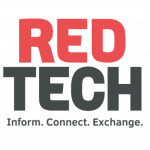AMSTERDAM — When IBC2025 closed its doors on Sept. 15, organizers reported a slight decrease in attendance figures, with approximately 44,000 visitors compared to the officially reported 45,000 in 2024. Exhibitors followed a similar trend, slipping from around 1,350 last year to 1,300 this year. No official figure on exhibition space was released as of Sept. 16, but anyone who walked the show floor extensively would likely report the impression that the 46,000 square meters recorded in 2024 was not matched this time.
Still, headline numbers don’t tell the whole story. For the radio and audio sector, IBC2025 was lively, crowded and full of signals about where the industry is headed.
Hall 8, the long-standing hub for broadcast radio and audio technology, was already buzzing on the opening day, Friday, Sept. 12. By Saturday and Sunday, crowds had swelled to the point that navigating the aisles became difficult, and even the corridors were jammed. Exhibitors consistently reported strong attendance, good engagement and quality sales conversations.
The visible reduction in stand space can also be read differently when viewed through the lens of technology’s direction. Perhaps the most telling quote of IBC2025 came from Norwegian technology manufacturer Appear’s stand: “What will you do with your empty rack space?” That question captured one of the main themes of IBC2025. AI, cloud platforms and the virtualization of hardware are dominating discussions in any production studio.
Audio a critical role
Antennas and transmitters remain in their own category, still evolving with higher power density and better efficiency. But almost every other product or function can now be delivered through a network connection and displayed on a screen, whether on a smartphone, a laptop or a wall-mounted monitor. The computing power no longer needs to sit on-site. It resides in the cloud, either within private infrastructure or, increasingly, in fully virtualized environments managed offsite. For broadcasters, this means new ways of scaling operations. Many manufacturers are already offering solutions that allow even the largest organizations to run without any locally installed processing hardware.
AI was particularly visible. Market-ready products were on display everywhere, including systems that automatically create and manage jingles, platforms that generate advertising campaigns in countless hyper-localized variations, and even fully automated radio stations. These setups operate with no human staff on site, relying instead on AI-generated voices that emulate the voices of DJs and reporters. They provide song introductions, deliver news bulletins and even read traffic updates — all produced automatically.
Muki Kulhan, IBC innovation co-lead, underlined the point: “audio will continue to play a critical role at IBC — it’s fundamental to every media experience.” She noted that organizers are already discussing ideas for next year and “would absolutely welcome more radio-based project challenges for next year’s cohort,” signaling IBC’s interest in keeping audio innovation firmly on the agenda.
These stories might interest you
NPO 3FM celebrates 60 years of innovation

